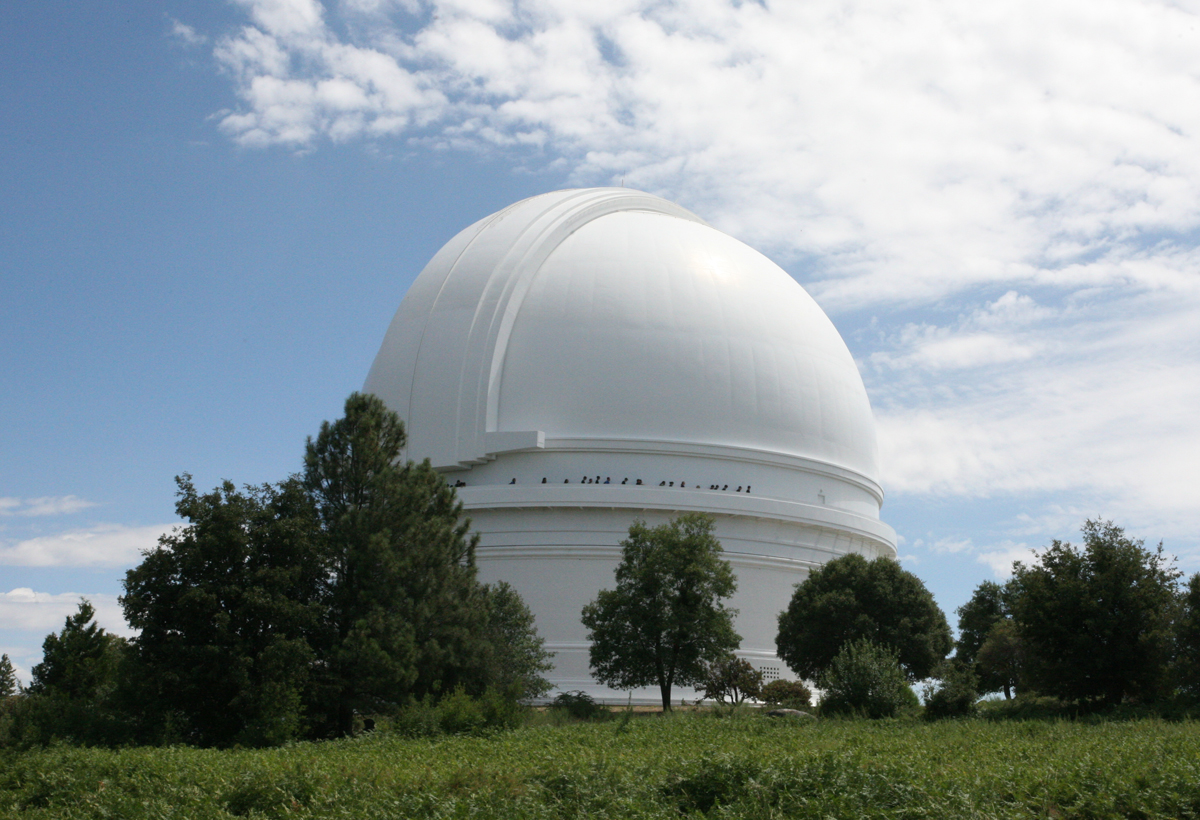
This photo of the dome for the 200-inch telescope was taken 73 years ago - August 31, 1937.
Okay, I am one day early. Sorry about that. Still, it is a wonderful photo of the dome under construction. Don't you agree?
Palomar Skies a blog with news and information about the Palomar Observatory. Postings here will cover current research, history and public outreach events taking place at the observatory.

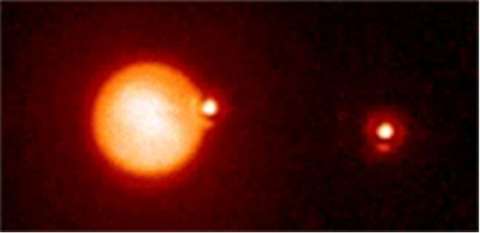 What might look like Pac Man swallowing a dot is actually Saturn's moon Titan occulting (passing in front of) a binary star system (named NV0435215+200905). The two stars are separated in the sky by just 1.5 arc seconds (One arc second is 1/3600 of a degree).
What might look like Pac Man swallowing a dot is actually Saturn's moon Titan occulting (passing in front of) a binary star system (named NV0435215+200905). The two stars are separated in the sky by just 1.5 arc seconds (One arc second is 1/3600 of a degree).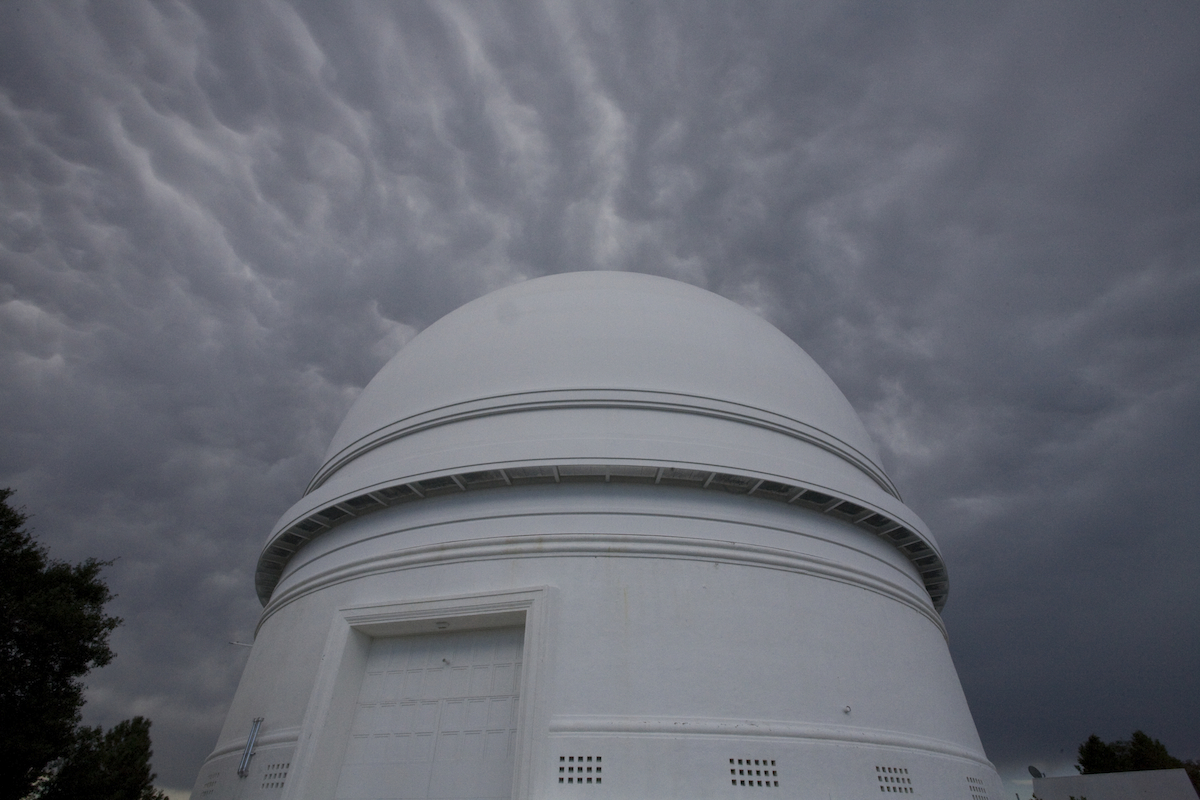 Here is a close-up of the mammatus clouds:
Here is a close-up of the mammatus clouds: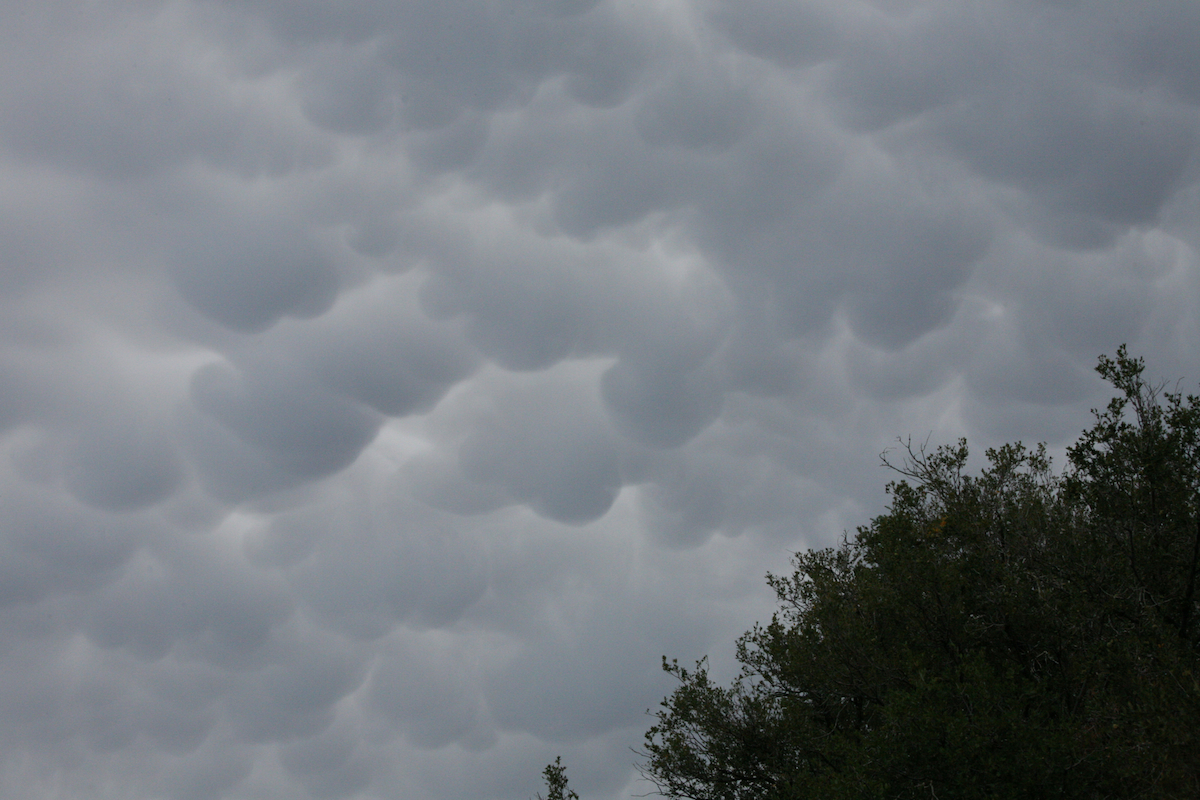 Thunderstorms can bring dangerous weather here in the back country. It is important for visitors to the area to pay attention to any weather alerts and to do their best to use common sense to try to be safe, especially when there is lightning in the area.
Thunderstorms can bring dangerous weather here in the back country. It is important for visitors to the area to pay attention to any weather alerts and to do their best to use common sense to try to be safe, especially when there is lightning in the area.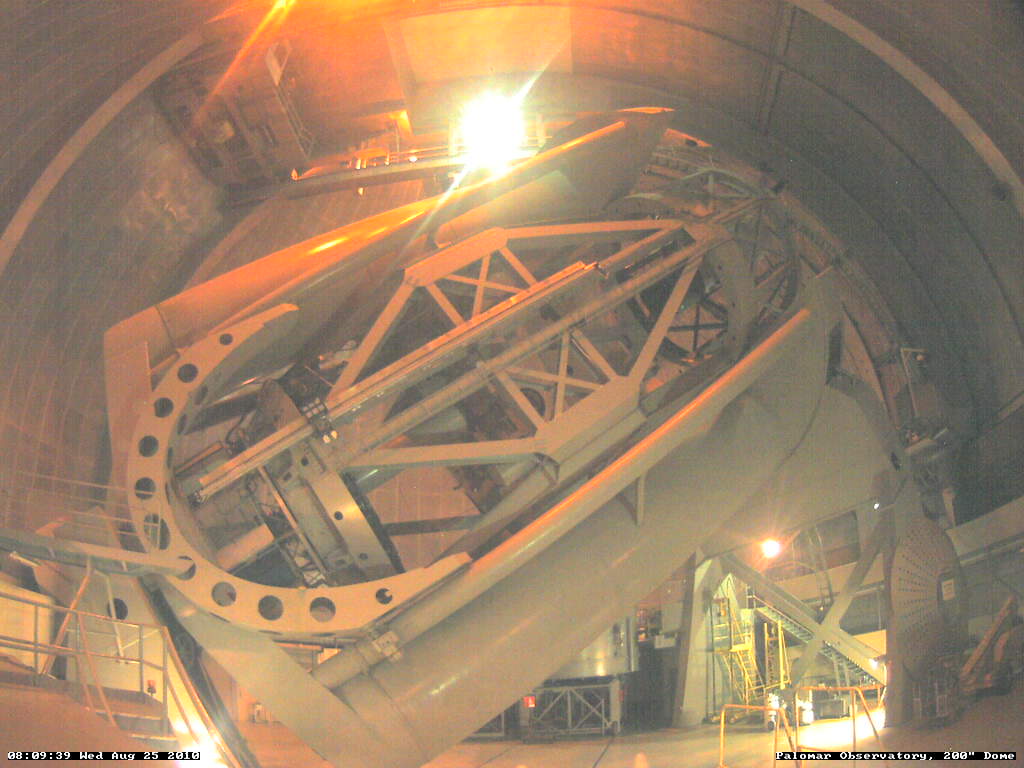
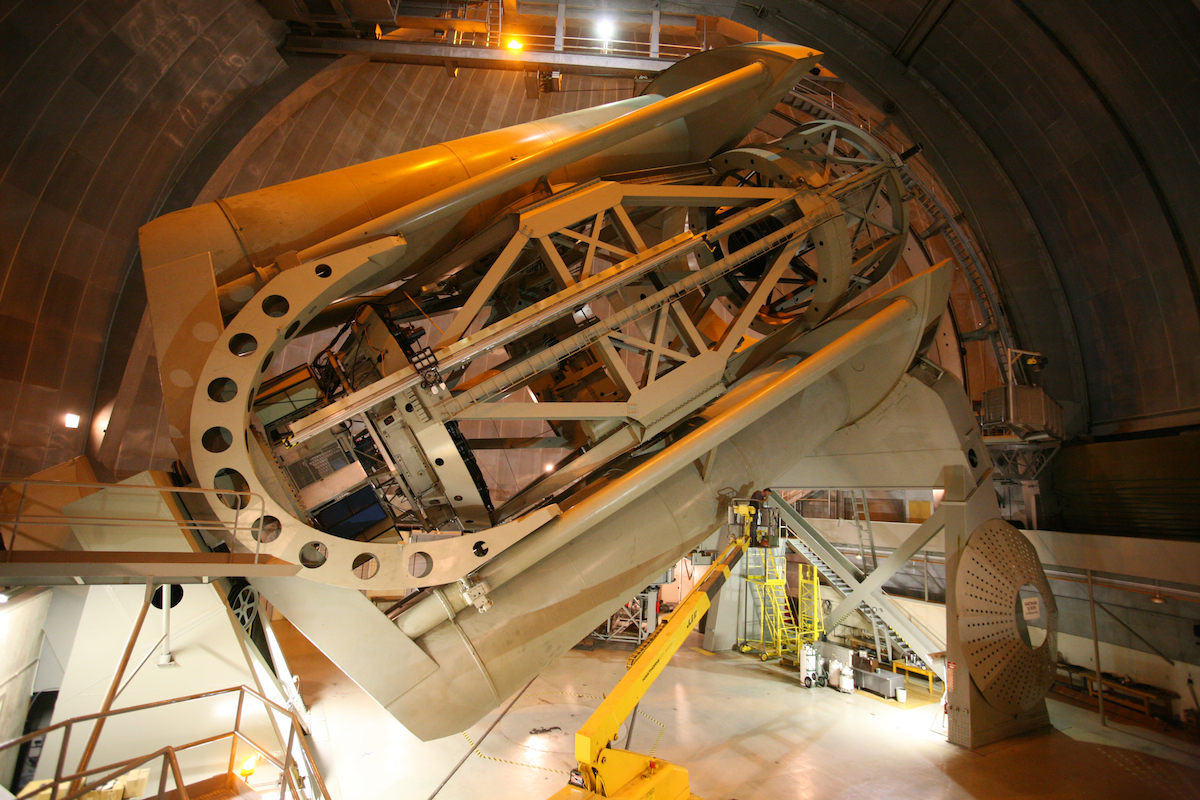
 It is a tough job, but somebody's gotta do it.
It is a tough job, but somebody's gotta do it.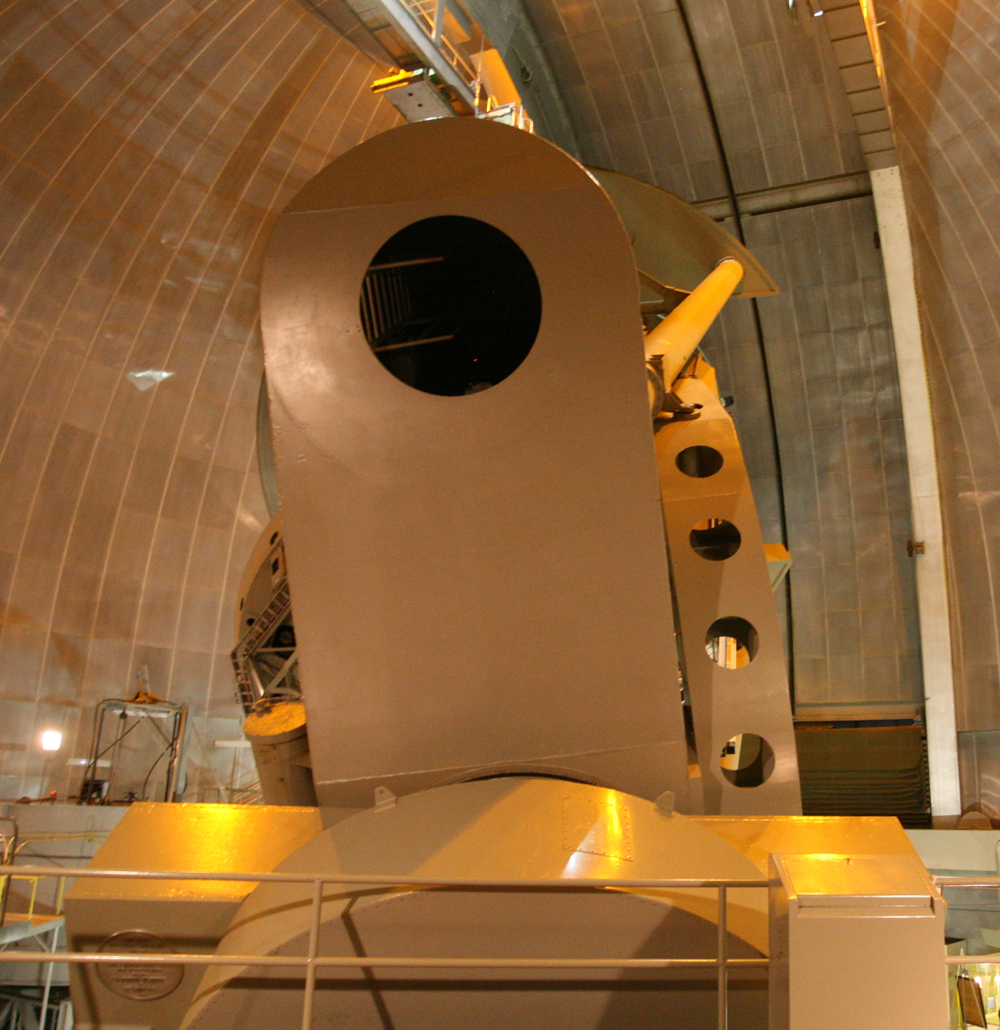
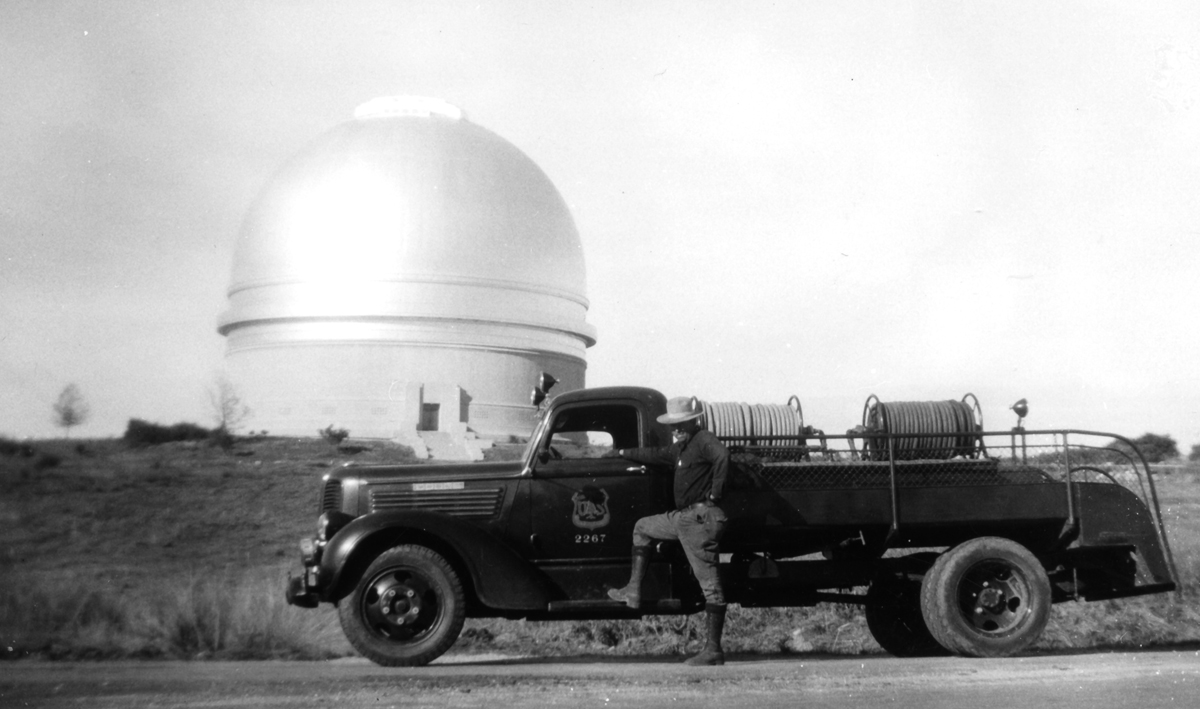


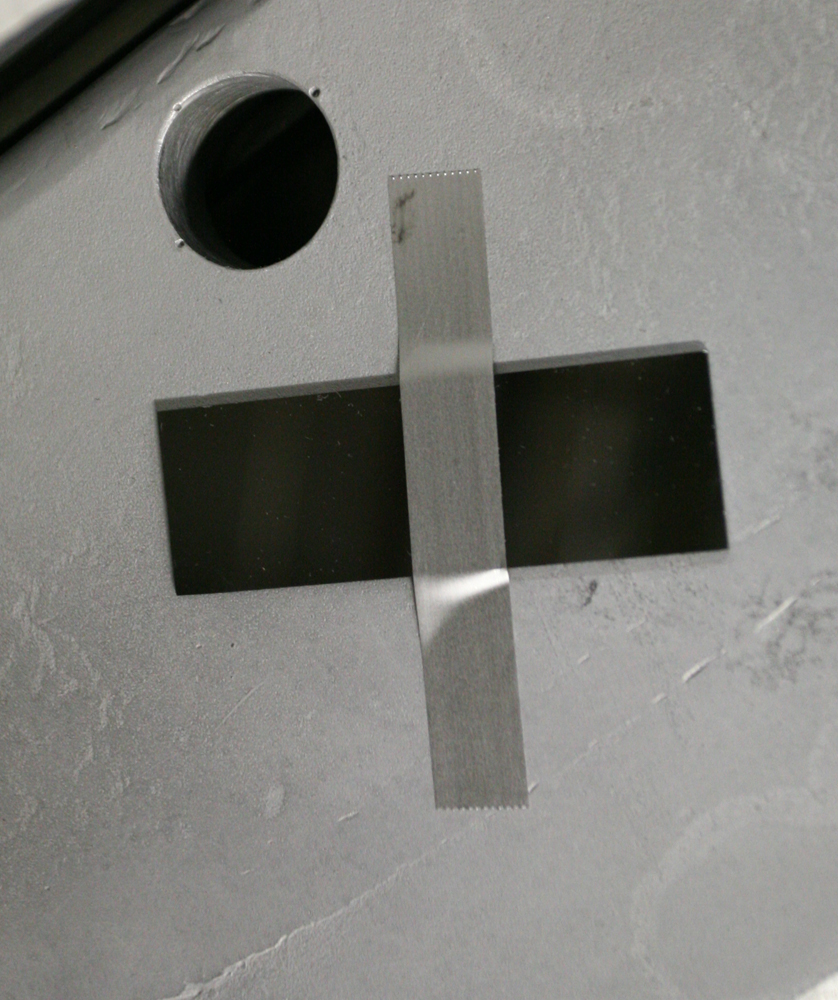
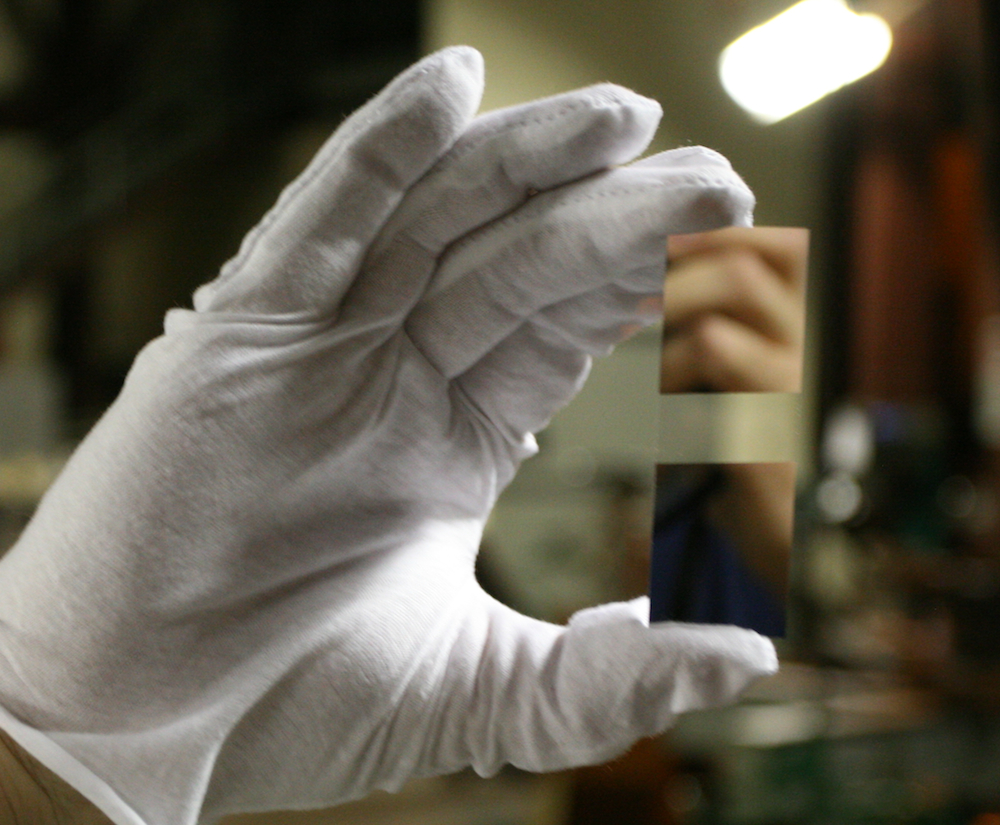

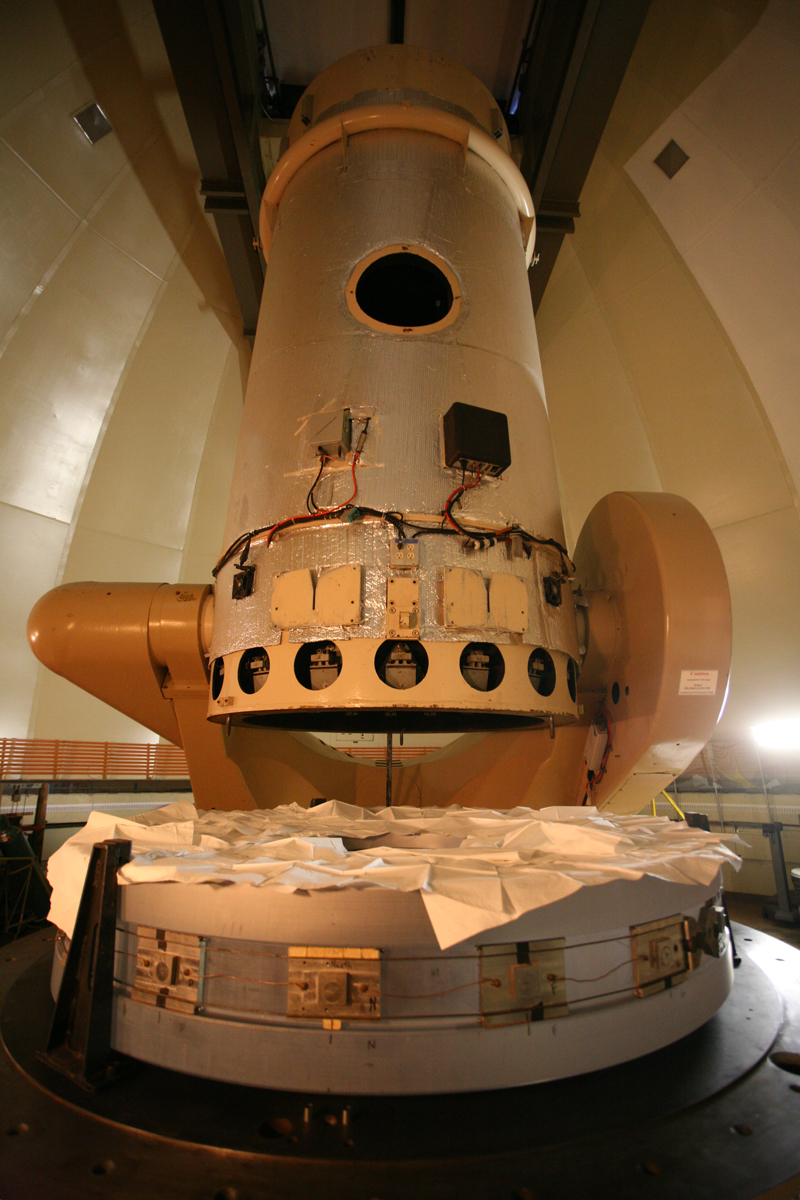
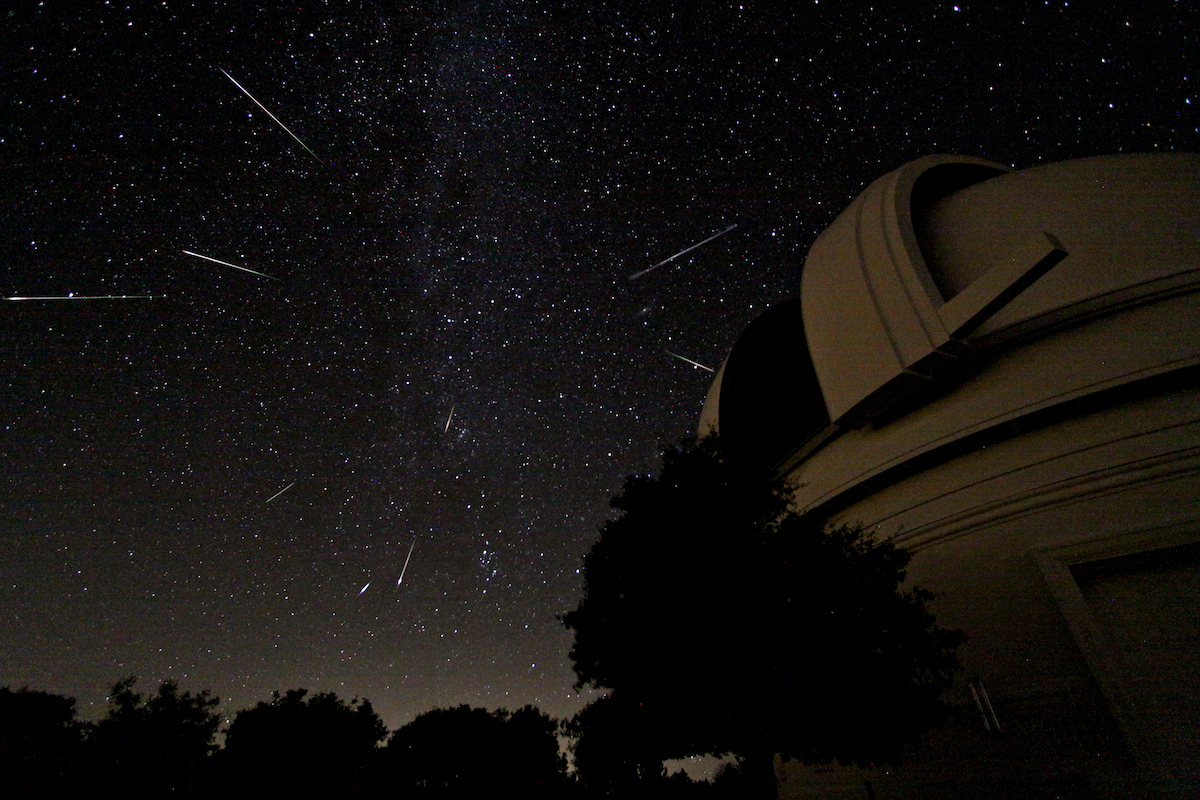
 I think that most people would agree that the Palomar crew does pretty good work.
I think that most people would agree that the Palomar crew does pretty good work.

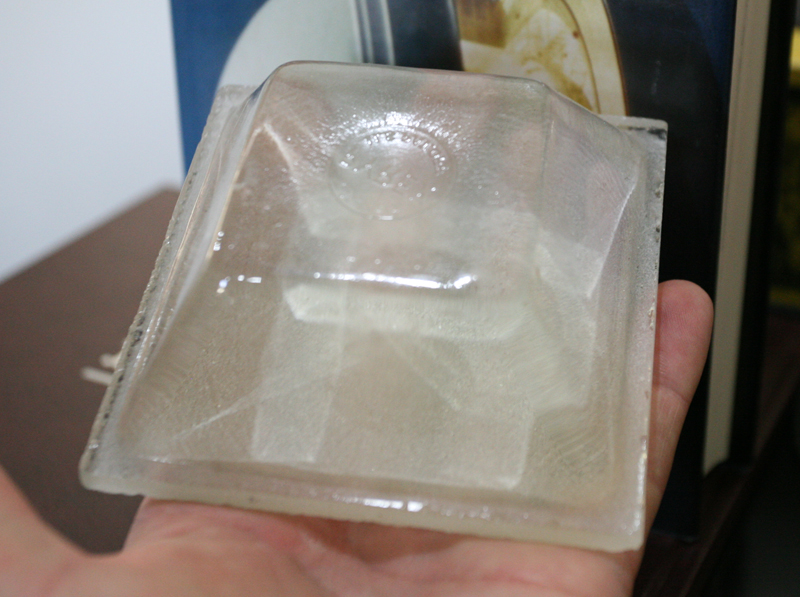 They were made of Pyrex glass by Corning Glass Works, just like the 200-inch mirror was. In the Optical Shop at Caltech they were fashioned into tools that were used for both grinding and polishing the 200-inch.
They were made of Pyrex glass by Corning Glass Works, just like the 200-inch mirror was. In the Optical Shop at Caltech they were fashioned into tools that were used for both grinding and polishing the 200-inch.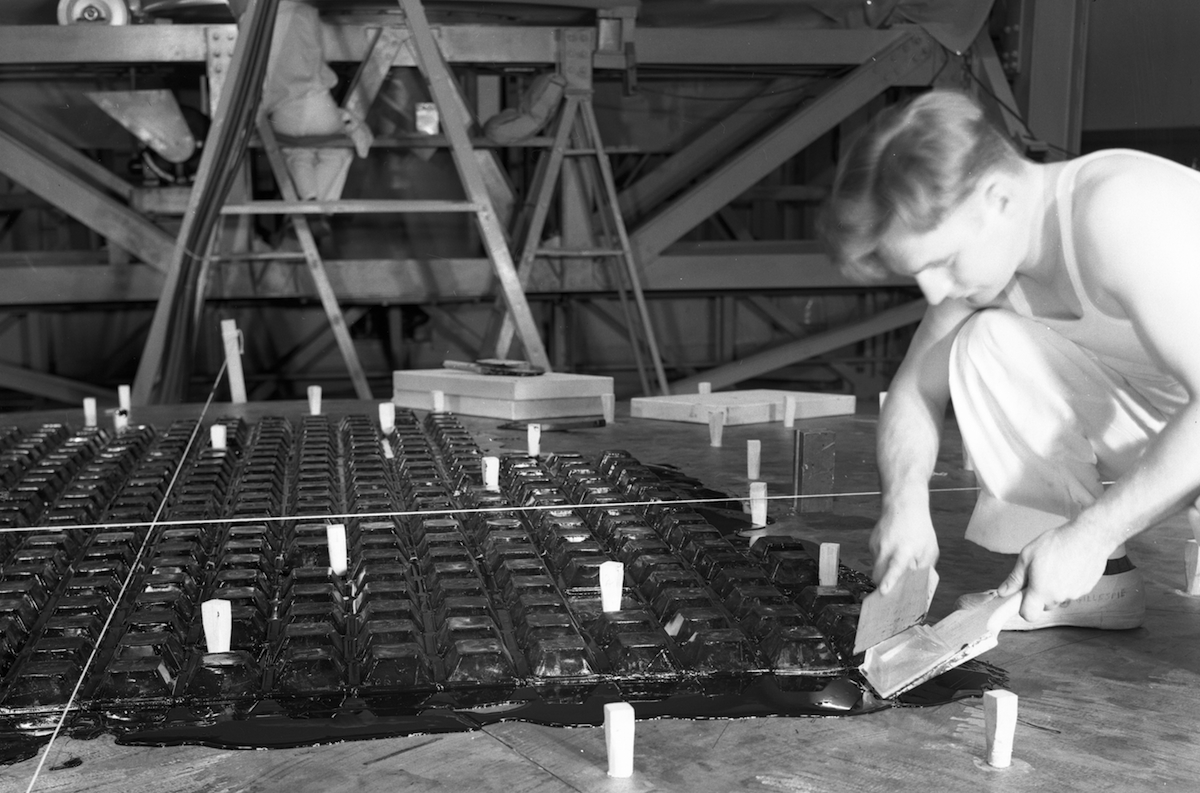
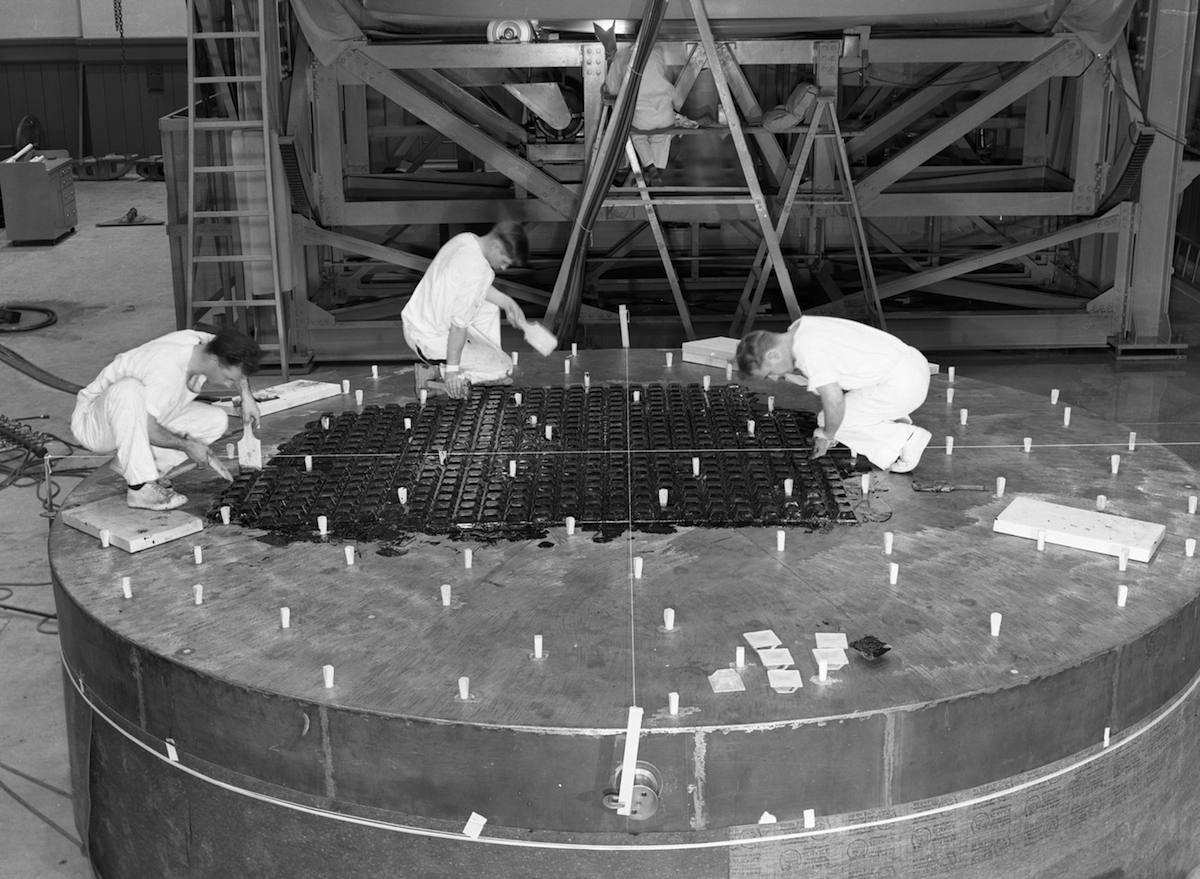
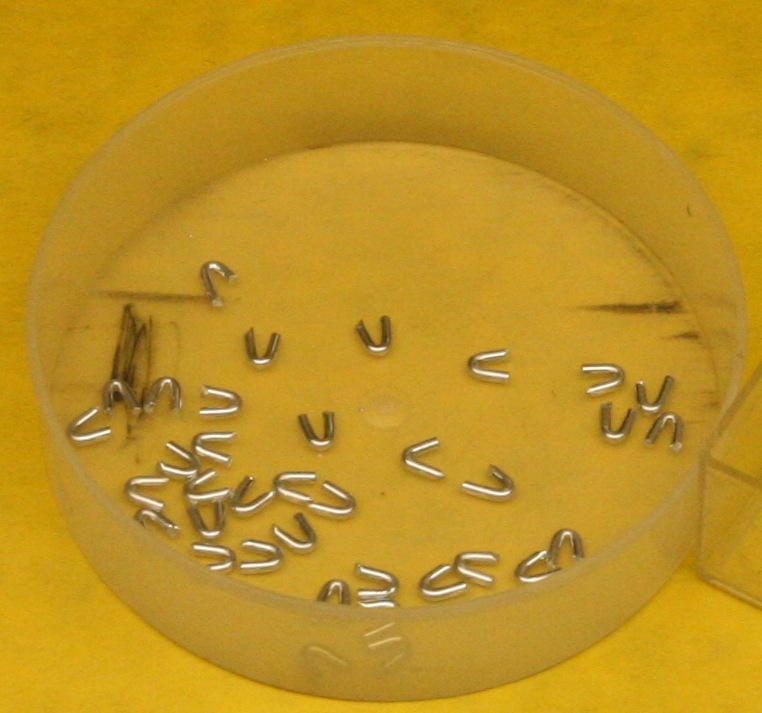 onto thirty two of these:
onto thirty two of these: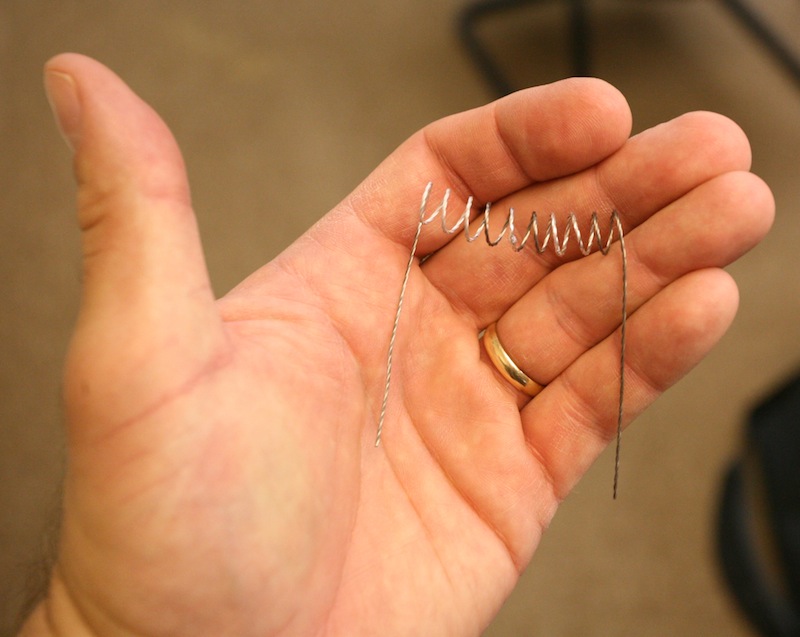 Specifically 0.165 grams of aluminum (about 3 of the pieces shown above) gets melted on each of the 32 tungsten wire coils. Those coils get placed into the aluminumizing chamber where a total of 5.28 grams of aluminum gets vaporized to provide a thin, even coating of the top surface of the mirror.
Specifically 0.165 grams of aluminum (about 3 of the pieces shown above) gets melted on each of the 32 tungsten wire coils. Those coils get placed into the aluminumizing chamber where a total of 5.28 grams of aluminum gets vaporized to provide a thin, even coating of the top surface of the mirror.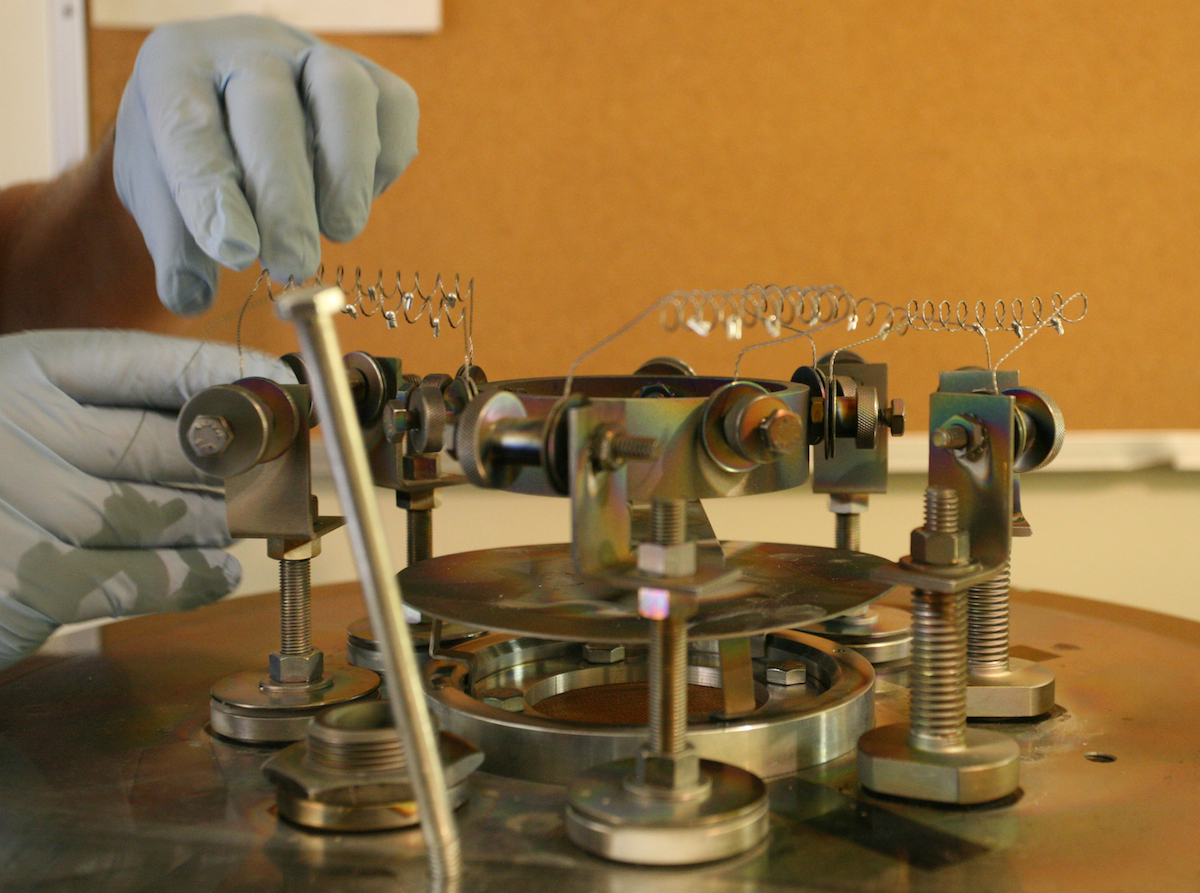
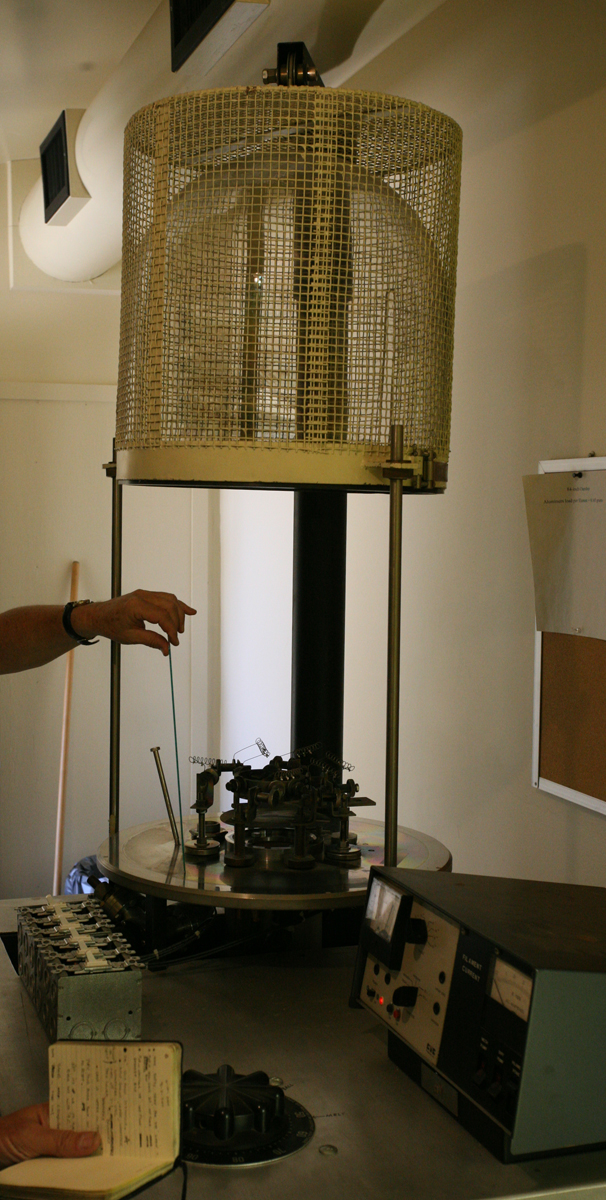
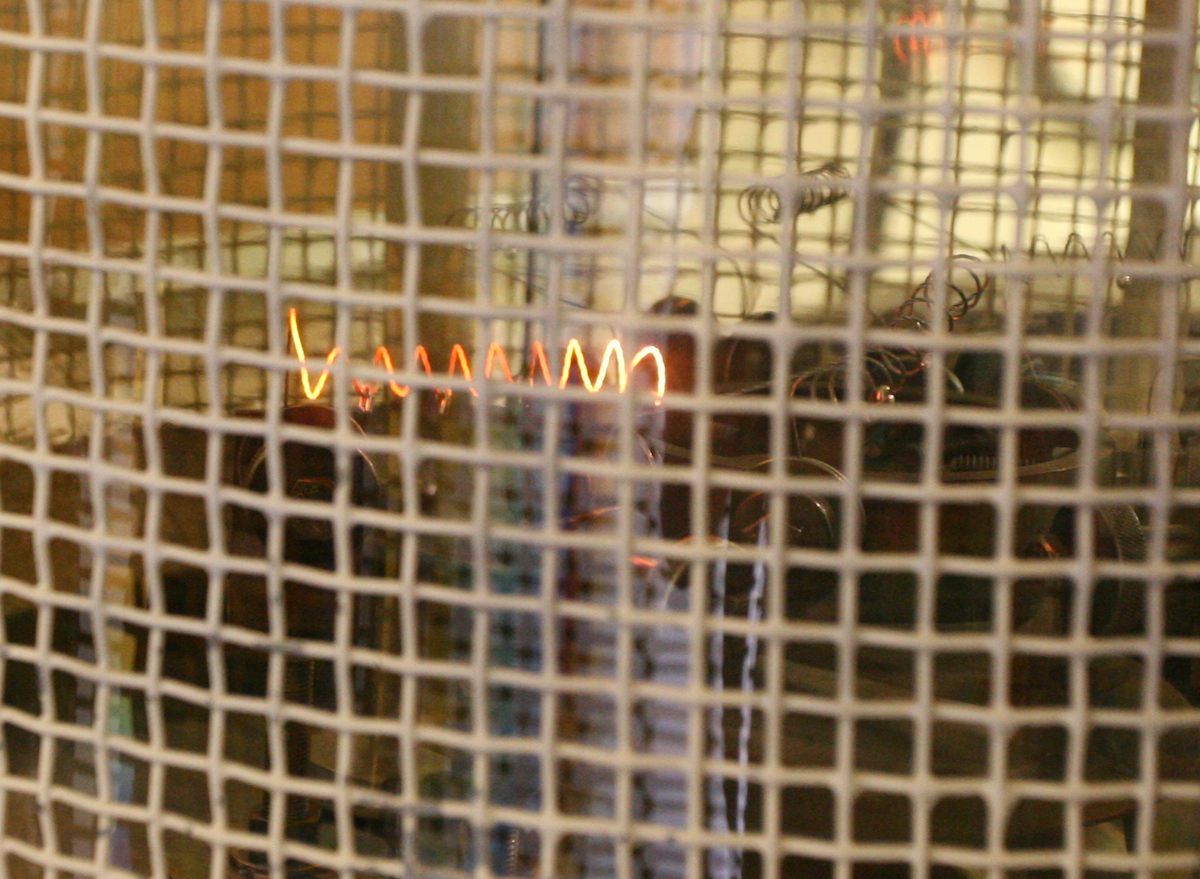
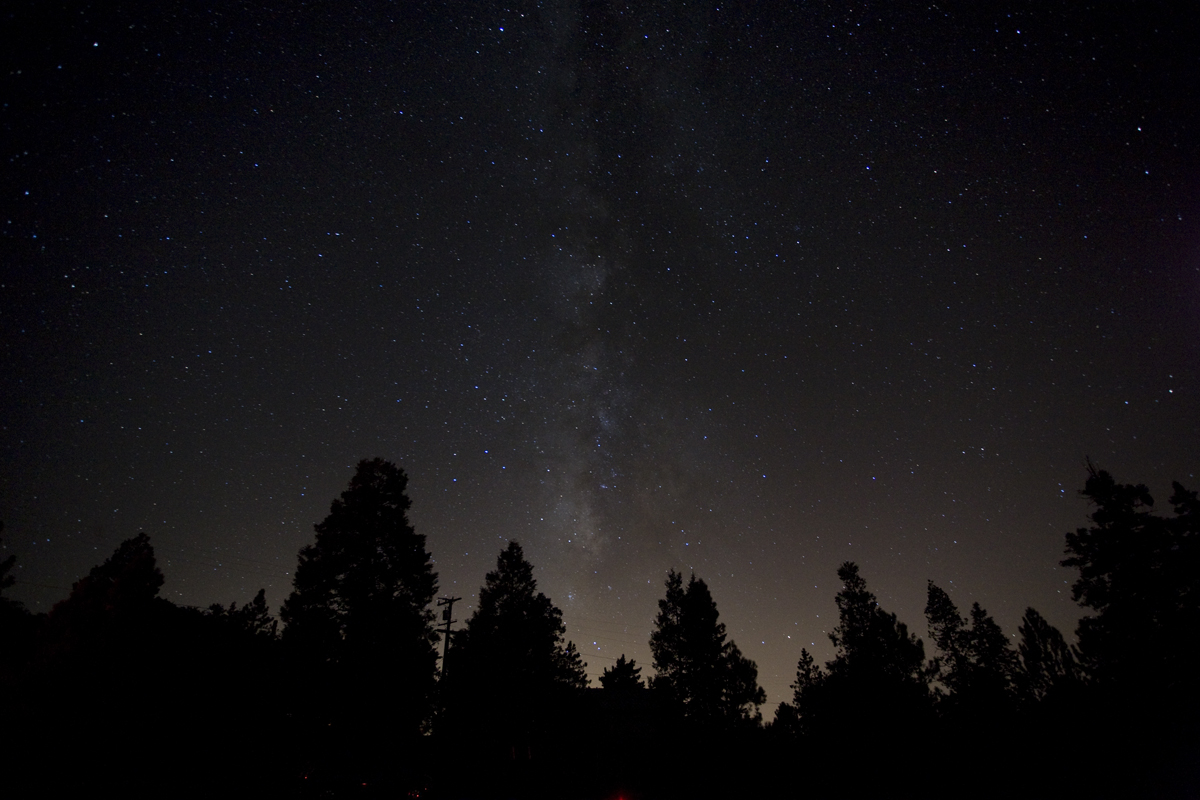
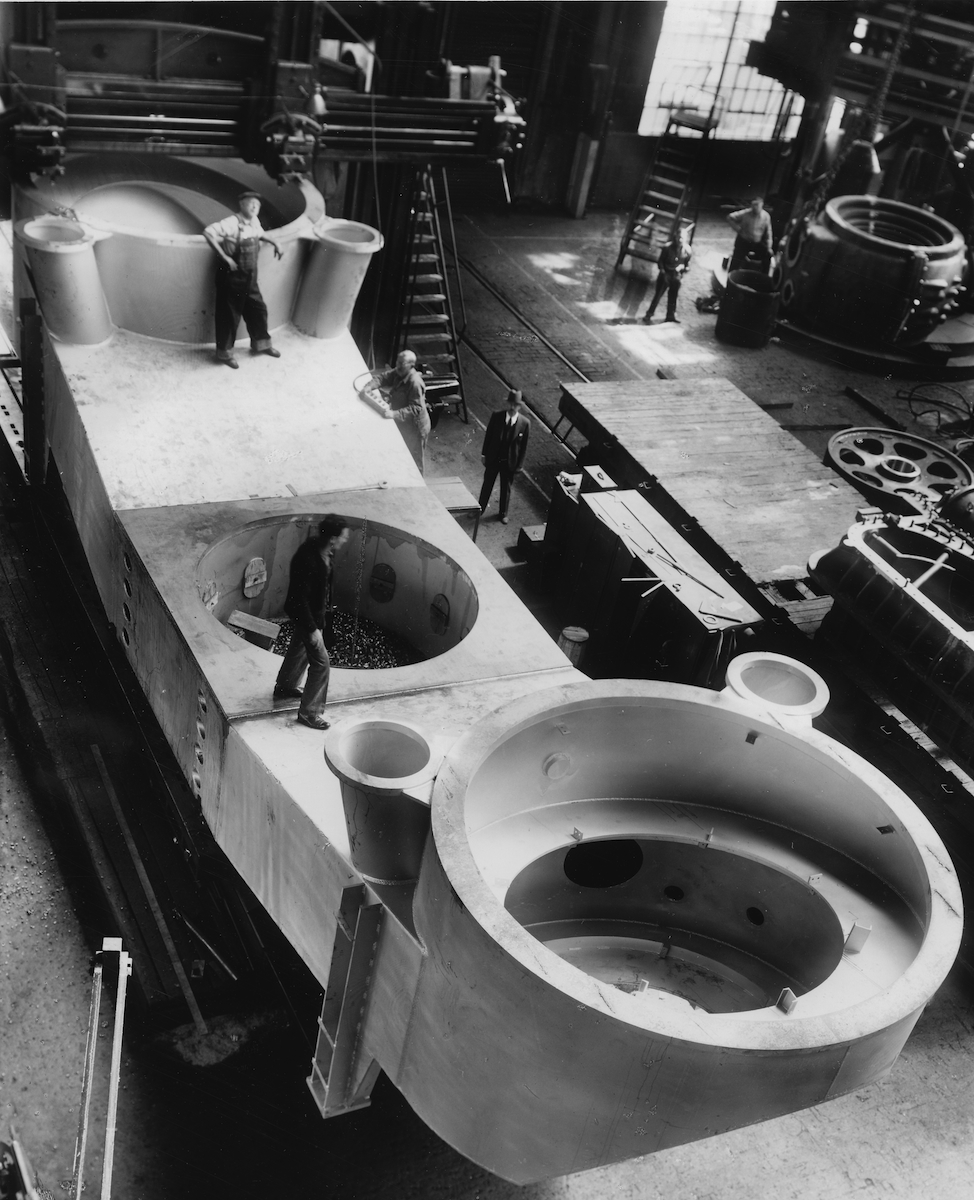 As you can see it is pretty huge. As you can imagine the task of bringing it into the dome was not easy. Ronald Florence described it nicely in his book about Palomar, The Perfect Machine:
As you can see it is pretty huge. As you can imagine the task of bringing it into the dome was not easy. Ronald Florence described it nicely in his book about Palomar, The Perfect Machine:The Caltech engineers had calculated the size of the hatch in the dome the way a mover can calculate whether a sofa or piano will fit through a doorway. The opening was mathematically large enough for the largest components--the sections of the horseshoe and the lower section of the yoke mounting, which held the two tubes that connected to the horseshoe. A draftsman with a slide rule could demonstrate that with the right twists and turns the hatch would accommodate everything that had been shipped.
......
For one piece, the bottom section of the yoke, the engineers at Caltech had designed a special lifting harness to bring the assembly off the truck and up through the hatch. The harness didn't arrive in time for the unloading, so [superintendent Byron] Hill and his crew did it with lifting hooks and slings they put together on the spot. The unit had been trucked lying on its back and had to be tipped onto its side to fit through the hatch. Tipping a structure while it is hanging from rigging is a tricky operation, because the center of gravity of the item shifts as it turns. The fit was tight. The next day, when the yoke had been squeezed through the hatch and the exhausted crew had gone to bed, Hill said he finally understood what women went through at childbirth.
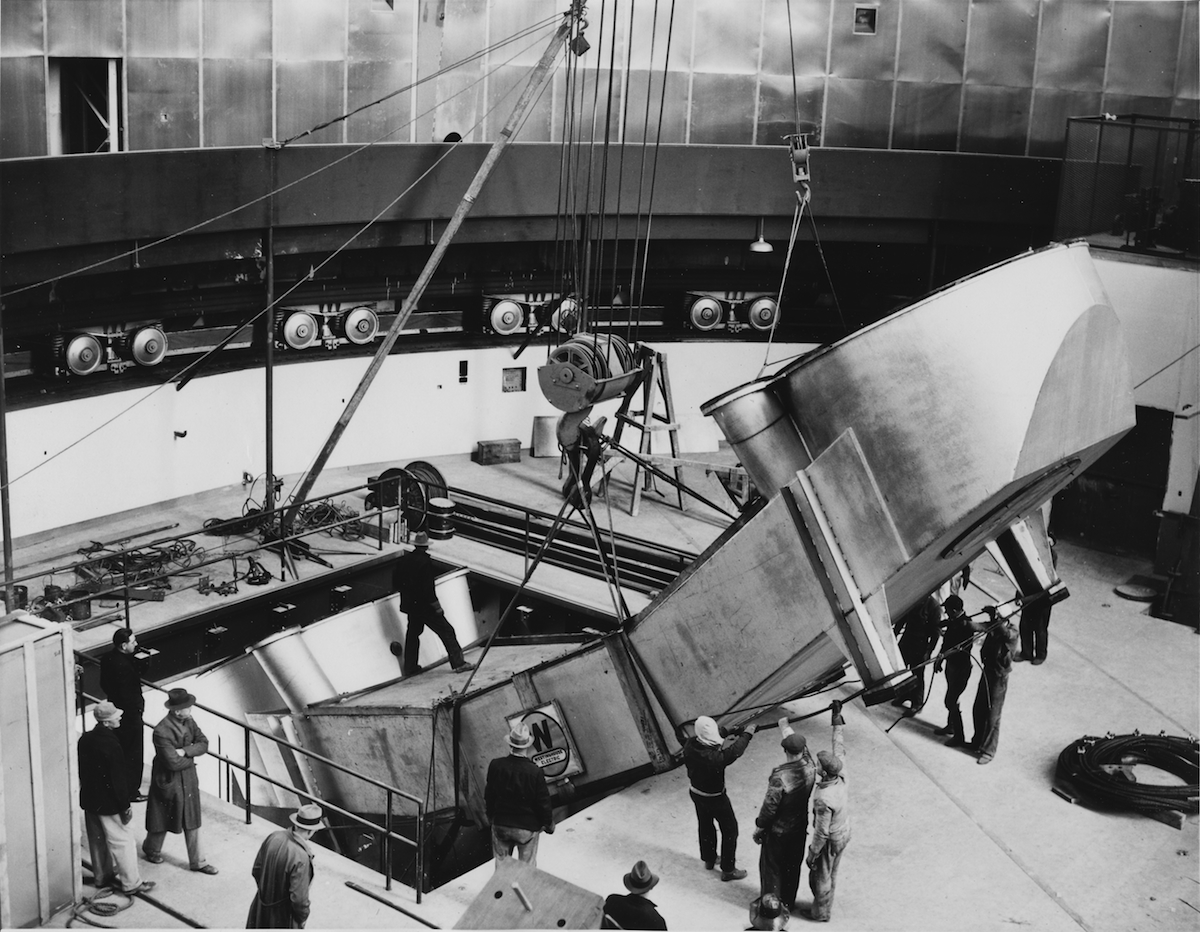
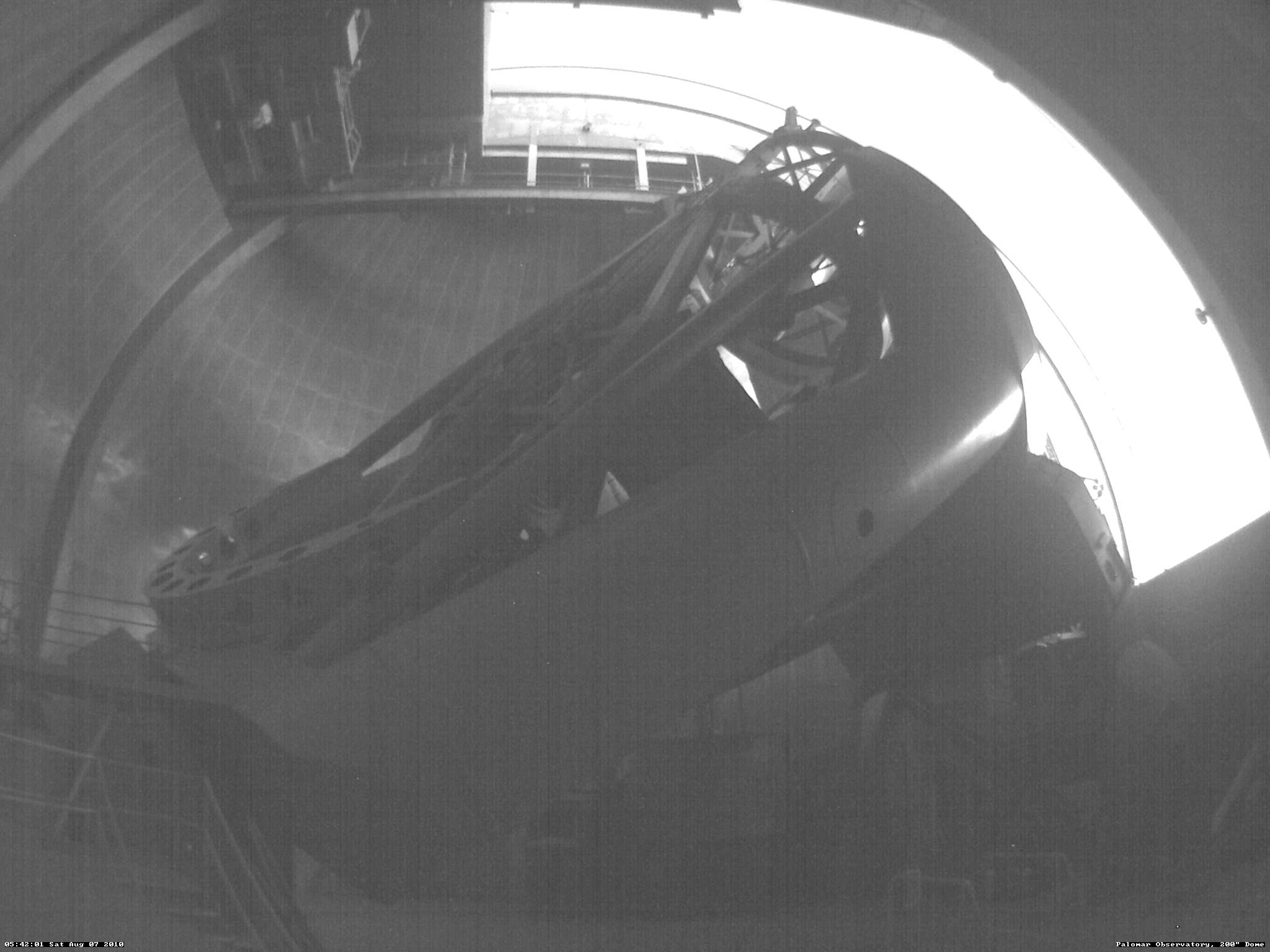

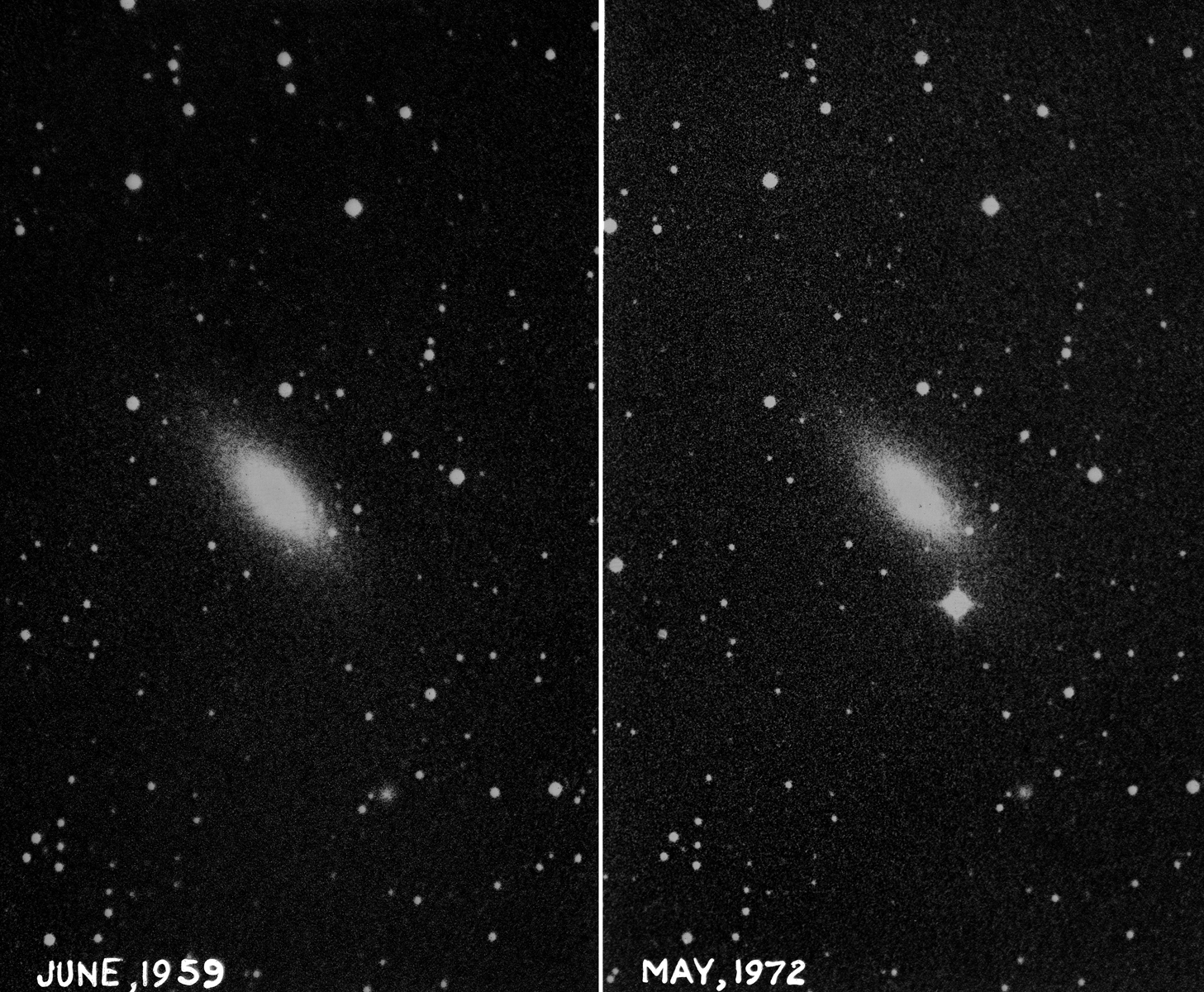

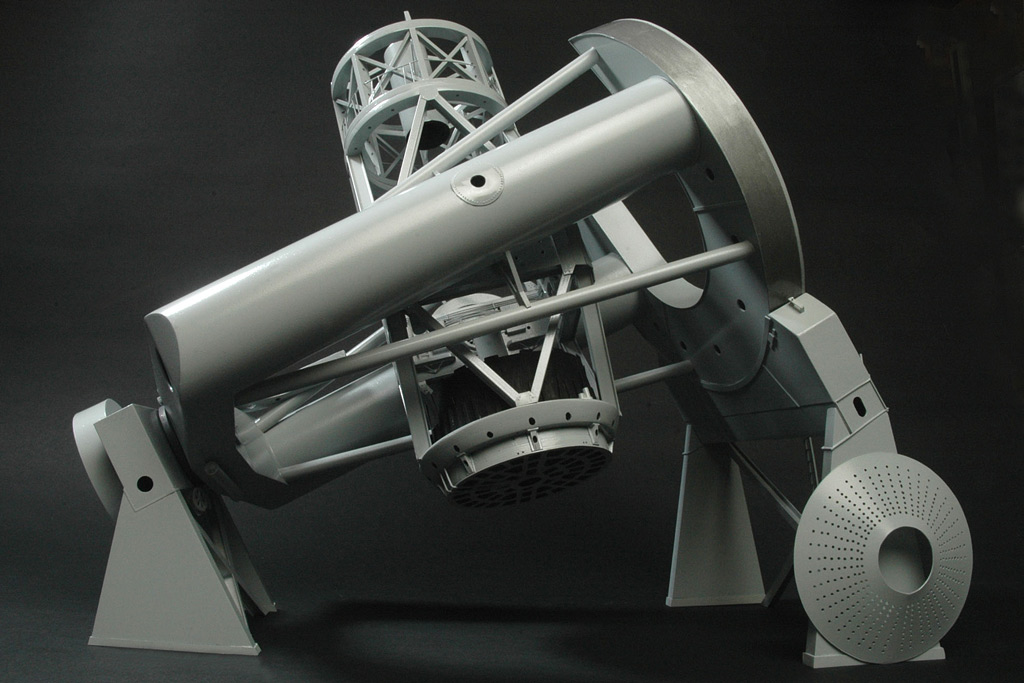 If you look closely you'll see that Rick has paid close attention to detail and added nice extras like the Hartmann screen (at right) and the dark, open mirror cover. Another fine example of his work is the view looking down into prime focus:
If you look closely you'll see that Rick has paid close attention to detail and added nice extras like the Hartmann screen (at right) and the dark, open mirror cover. Another fine example of his work is the view looking down into prime focus: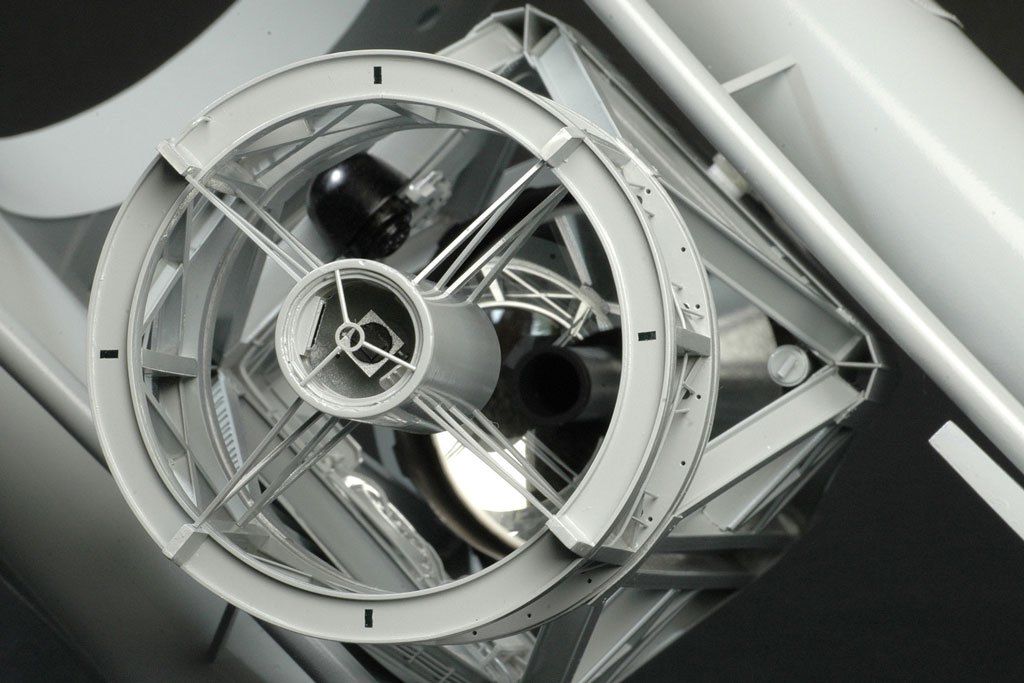 Notice that there is a chair for the observer and what looks to be a plate holder. The dark thing directly above (from this perspective) prime focus is the housing for the coudé mirror.
Notice that there is a chair for the observer and what looks to be a plate holder. The dark thing directly above (from this perspective) prime focus is the housing for the coudé mirror.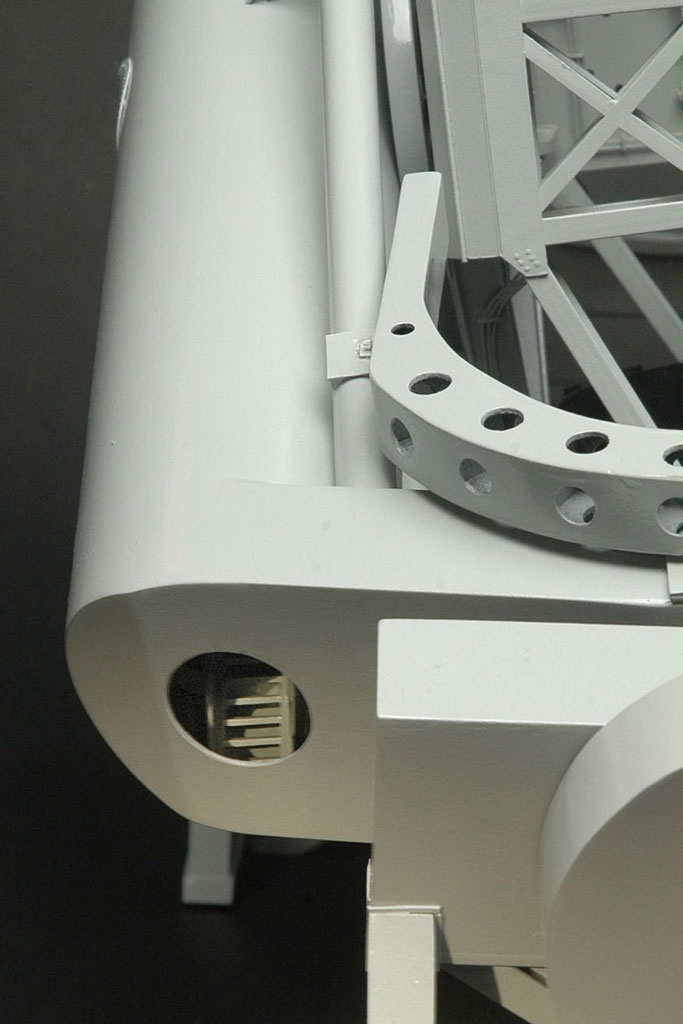 Finally, here is a look at the west arm of the telescope. Notice that he included the stairs inside the arm. Nice work, Rick!
Finally, here is a look at the west arm of the telescope. Notice that he included the stairs inside the arm. Nice work, Rick!A Poem For Mount Palomar Observatory
TO THE COSMOS
Night
Starry, Starry Night
Infinity of Light
Distant Futures
Nexus Here!
Photons, Photons, Photons!
My Brain
A Microstar
In Awe
Of Celestial Parents
~Ian Oliver Martin
